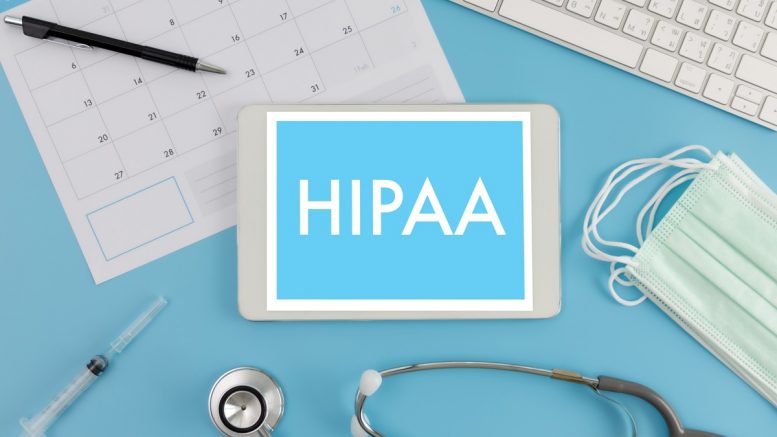The shift to digital systems in healthcare has opened new avenues for improving patient care – from AI-powered diagnostics to remote monitoring. At the same time, this digital evolution has expanded the surface of cyber threats. As sensitive patient information flows through more platforms and devices, protecting that data has become an increasingly complex challenge.
However, federal oversight is failing to keep pace with the escalating risks. A recent report revealed that the Health and Human Services (HHS) Office for Civil Rights (OCR) examined just 8 of 180 HIPAA requirements during audits, leaving critical gaps that expose healthcare organizations to compliance failures and serious data breaches.
In this high-risk environment, hospitals and healthcare providers can’t afford to wait for stricter enforcement – they must take matters into their own hands to secure patient data before the next breach occurs. Because, as any cybersecurity professional will tell you, it’s not a question of if a breach will happen, but when.
Balancing patient care with cybersecurity
Healthcare organizations face a delicate challenge: maintaining fast, efficient patient care while upholding rigorous cybersecurity standards. In high-pressure environments, healthcare workers often sidestep security protocols – whether by sharing passwords, reusing weak ones, or bypassing encryption – to save time. These shortcuts, while expedient in the moment, introduce critical vulnerabilities that cybercriminals can exploit.
The consequences of neglecting cybersecurity extend beyond compliance violations. A breach can disrupt hospital operations, compromise patient safety, and erode trust in the healthcare system. From delayed treatments to the exposure of sensitive patient records, these incidents have far-reaching effects that demand proactive measures to protect critical data.
Successfully balancing patient care with cybersecurity requires organizations to design systems that align with the realities of healthcare workflows. For example, requiring frequent password changes or complex authentication processes without considering the urgent nature of patient care may lead staff to prioritize speed over security. To address this, organizations should focus on implementing user-friendly tools, such as single sign-on systems and biometric authentication, which streamline access without compromising data protection.
Emerging threats
The landscape of healthcare cybersecurity is evolving rapidly, with emerging threats adding new layers of complexity. Cybercriminals are increasingly leveraging sophisticated tactics, such as AI-driven phishing campaigns and ransomware-as-a-service (RaaS), to exploit vulnerabilities in healthcare systems.
AI-driven phishing campaigns are particularly concerning. These attacks use machine learning to craft highly personalized and convincing emails, making them harder to detect. For instance, attackers might reference a specific patient case or use internal jargon to trick staff into divulging sensitive information. The success of these campaigns underscores the need for advanced email filtering tools and continuous staff training to identify and report suspicious activity.
Ransomware-as-a-service has also lowered the barrier for entry for cybercriminals, allowing less technically skilled individuals to execute high-impact attacks. Healthcare organizations are prime targets due to the critical nature of their services, which makes them more likely to pay ransoms to restore operations. These attacks can paralyze hospital systems, delay treatments, and compromise patient safety.
Another growing concern is the Internet of Medical Things (IoMT). Devices like smart monitors, infusion pumps, and wearable health trackers are increasingly connected to healthcare networks. While these devices improve patient care, they also expand the attack surface, providing cybercriminals with more entry points. Many IoMT devices lack robust security features, making them vulnerable to exploitation.
Reducing risk
To address persistent cybersecurity challenges in healthcare, organizations must adopt a proactive approach that balances security and operational efficiency. Implementing role-based access controls is a crucial step. This measure ensures employees can only access the data necessary for their specific tasks, limiting exposure to sensitive information and reducing the risk of breaches.
Tailored security training is another essential strategy. Programs should address the unique demands of healthcare environments, teaching staff how to identify phishing attempts and handle patient data securely under real-world conditions.
Fostering a culture of vigilance is equally critical. When patient data is treated as a valuable asset, employees are more likely to scrutinize requests for access and take necessary precautions. Simple practices, such as verifying unusual requests or questioning unfamiliar access attempts, help prevent lapses that could otherwise compromise sensitive information.
Additional measures
Healthcare professionals can further reduce cybersecurity risks by adopting the principle of “trust, but verify.” If a staff member receives an unusual request – particularly one asking for access to sensitive data – following up to confirm its legitimacy can prevent costly mistakes. A quick phone call or double-check can thwart social engineering attacks, where cybercriminals impersonate trusted individuals to manipulate staff.
Leadership roles, often prime targets for cybercriminals, require additional security layers. Advanced email filtering, multi-factor authentication, and other protective measures can reduce risks for executives and senior staff, safeguarding both individuals and the organization as a whole.
Final thoughts
The digital transformation of healthcare offers immense benefits but also exposes patient data to significant cybersecurity risks. With limited federal oversight and persistent enforcement gaps, healthcare organizations must take the lead in safeguarding sensitive information. By implementing strong security measures, fostering a culture of vigilance, and embedding cybersecurity into daily operations, they can protect both their operations and patient trust.
By Eva Pittas of Thoropass





